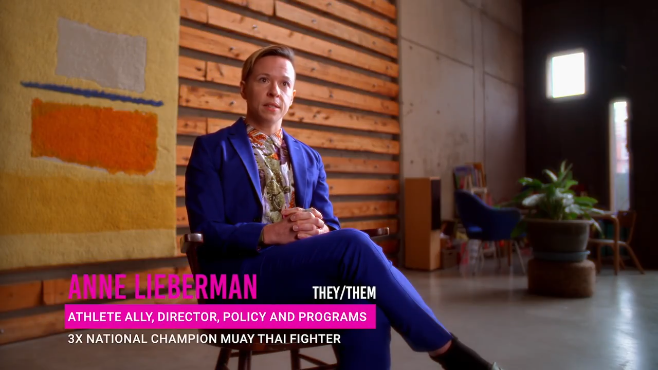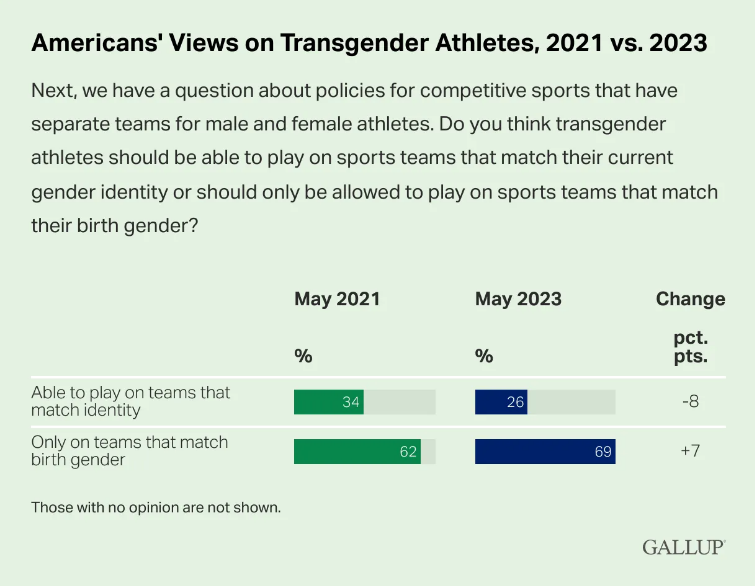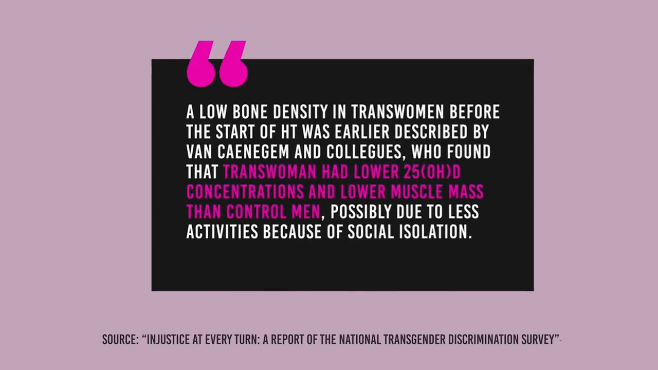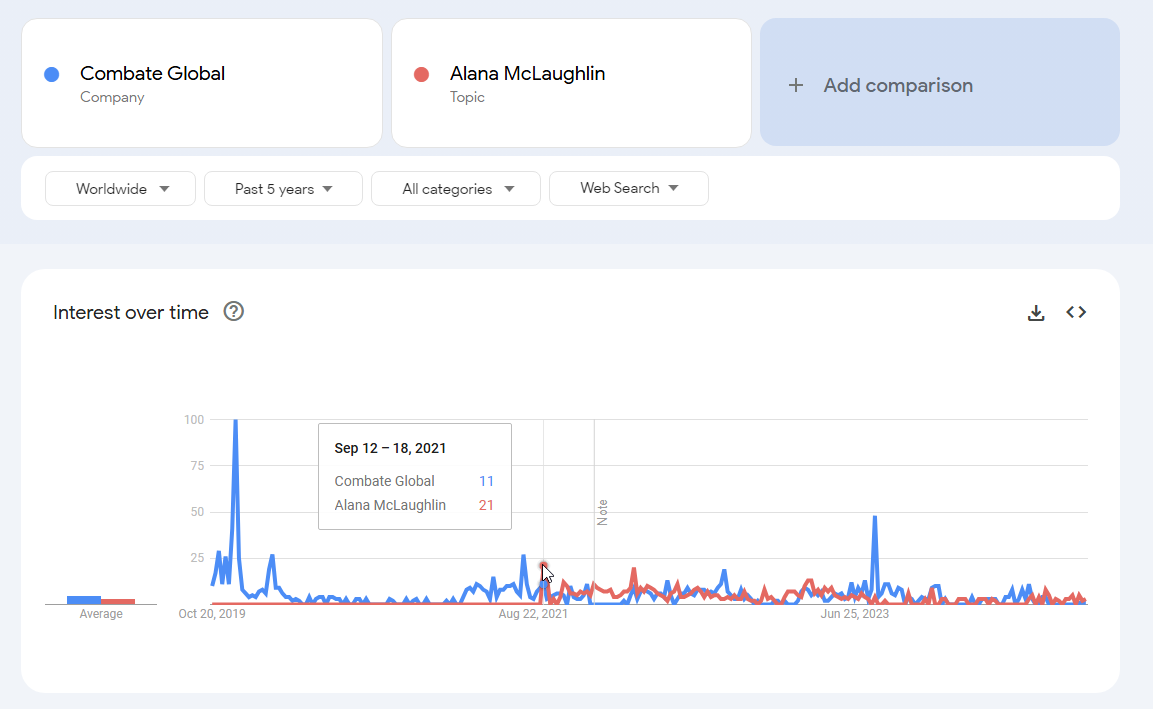Back in 2021, I was working as a beat reporter for an MMA website when an interesting video surfaced on Twitter—it was the MMA debut of transgender female fighter Alana McLaughlin.
There wasn’t much press leading up to the event, but after the fight, it became all the MMA media could talk about for the next month.
As a woman actively involved in the combat sports community and in training myself, I found much of the coverage deeply problematic. Many of the discussions were framed around political ideologies, detracting from the actual sport.
Following her debut, there was some buzz on social media, notably involving trans MMA trailblazer Fallon Fox. Fox was attempting to influence opinions on Twitter by manipulating data and statistics. Considering the narrative Fox was trying to paint, I had suspicions Unfightable would be no different.
Unfightable, the documentary about McLaughlin’s MMA career, premiered earlier this year in limited release and is now available on FuseTV. From the outset, the documentary is framed as a cultural piece. It’s worth noting that Campbell McLaren, the head of Combate Global and the mastermind behind this promotional stunt, also produced the documentary.
The film begins with a selectively edited snippet from a Combate Global meeting where McLaren pitches the idea of bringing back Fallon Fox—who, by that time, was 44 years old in (and is now 48).
Act 1
In the present day, McLaughlin introduces viewers to her Wikipedia page, claiming that most edits involve people vandalizing it by changing pronouns. However, that’s not entirely true. Since the page’s creation in 2022, there have only been seven instances where someone actually changed the pronouns.
The documentary quickly delves into McLaughlin’s background. Her story is undeniably empathetic—she grew up in a strict religious household that rejected diversity. McLaughlin paints a rather harsh picture of her parents, accusing them of violating her privacy and exposing her to greater harm as a result.
Another significant voice in the documentary is Anne Lieberman, a 3-time national champion in Muay Thai.

Unlike McLaughlin, Lieberman competed in women’s Muay Thai despite using they/them pronouns.
McLaughlin’s upbringing and military experience clearly had a traumatic impact on her. Whether we agree with her life choices or not, it’s plausible that someone who endured a religious upbringing, was a victim of SA, and served in the special forces would struggle with post-traumatic stress disorder.
The documentary repeatedly tries to frame McLaughlin’s journey in a political context, suggesting that the safety of McLaughlin and other trans athletes is at risk. However, that doesn’t seem to align with reality. McLaughlin found acceptance within a group of online activists and eagerly positioned herself as an artistic figure.
Unfortunately, the documentary doesn’t dig deeper. Instead, it serves as a platform for a cause. While there are likely relatable aspects to McLaughlin’s story, her description of herself as a “tough-as-nails, candy-coated, hard femme, Trantifa super soldier” comes across as more propagandistic than an authentic human experience.
The film revisits the story of Fallon Fox. In an attempt to provide a counter-narrative, former UFC fighter Jake Shields is briefly introduced, but the documentary quickly cuts to McLaughlin criticizing various articles Shields has posted on Twitter.
Shields is far from the only critic of McLaughlin’s MMA journey, but he’s probably the easiest to discredit. He isn’t a 5-time MMA world champion, as he claims—he’s a former UFC fighter and Strikeforce champion. Though I’m not a fan of Shields, he at least deserved a chance to respond to McLaughlin’s voiceover commentary about him.
That said, Shields didn’t help himself either. In the brief clip where he discusses Fallon Fox, he manages to alienate the entire female audience by claiming that politics are a man’s job. For someone who prides himself on being smart and nuanced, the documentarians certainly played him into becoming the least likable version of himself.
There’s a deliberate attempt to obscure the narrative surrounding Fallon Fox. Fox didn’t disclose her biological status for most of her MMA career. She confirmed she was transgender in March 2013 and continued to compete in three more bouts after that. The majority of the backlash surrounded the fact that Fallon Fox broke a skull of her opponent in one of her bouts causing major backlash.
In 2014 MMA fighter Fallon Fox, a man who identifies as a trans woman, was permitted to compete against a woman, Tamikka Brents.
Brents suffered a concussion and a fractured skull and had to receive 7 staples to the head.
In 2020 Fox tweeted, "I enjoyed it. I love smacking up… pic.twitter.com/878IxLO35D
— Genevieve Gluck (@WomenReadWomen) March 30, 2024
Producer Campbell McLaren claims he didn’t want to put a target on McLaughlin’s back, but that’s precisely what the documentary was designed to do from the start—it was all a publicity stunt.
“For the people fueling this hysteria, it’s not really about sports at all. It’s about the erasure of transgender people from society as a whole,” one journalist from OutKick exclaims, adding, “In many ways, this is no different from the hysteria we saw around gay and lesbian people in the 1970s and 1980s. It’s just been repackaged for a new target.”

That claim is quite a stretch.
McLaughlin further asserts that claims about trans women having more bone density than cisgender women “are not backed by scientific inquiry.”
She uses an old talking point: “I’ve seen studies suggesting trans women as a population have lower bone density than cis women. It’s unclear whether this is due to sociological factors or physical ones, but I believe economic factors play a role.”
McLaughlin references this document as evidence.

However, the source she cites doesn’t contain that information. This quote was proven to be false years ago when Fallon Fox first shared it on Twitter.
What’s left out is that the original study on bone density, outlined here, indicates that bone density plays a key role in predicting fracture risk. Further, the linked source actually has preserved copies of videos Fox had made on her since deleted twitter.

However, the graph conveniently omits other critical data points. While it’s true that Black women over 45 have a lower fracture risk than white men, the same cannot be said for women under 40, who remain at higher risk across the board.
McLaughlin reluctantly admitted that the bone density information was shaped by the fact that the Injustice at Every Turn report featured a high number of individuals in extreme poverty, many of whom likely suffered from malnutrition.”Respondents lived in extreme poverty. Our sample was nearly four times more likely to have a household income of less than $10,000 per year compared to the general population.”
Another significant omission from the documentary is Combate Global’s involvement in McLaughlin’s training camp. The promotion covered the costs, which is highly unusual and shows clear bias in a sport as individual as MMA. Promotions typically pay for a fighter’s medicals and offer ‘show money’ for making weight and stepping into the cage. The rest of the purse, commonly known as ‘win money,’ is earned only if the fighter wins. Smaller promotions often don’t even cover medical costs. This is why fighters scramble to appear on shows like Dana White’s Contender Series.
 https://trends.google.com/trends/explore?date=today%205-y&q=%2Fg%2F11bwdxcf8j,%2Fg%2F11p169s_63&hl=en
https://trends.google.com/trends/explore?date=today%205-y&q=%2Fg%2F11bwdxcf8j,%2Fg%2F11p169s_63&hl=en
Furthermore, when it came to the actual fight, the documentary opted for a Spanish-language commentary version of the match to placate McLaughlin, who feels that the English commentary did her a disservice. This is especially amusing in a documentary already caught attempting to skew the information.
Alana recently expressed frustration with how the commentary during her debut match portrayed the fight. She felt the coverage downplayed the evenness of the bout and focused on perceived physical advantages due to her transition, which she strongly refuted. McLaughlin argued that both she and her opponent, Celine Provost, exchanged hits evenly and that the fight should have been celebrated for its competitiveness. This is despite the fact that the actual match includes a quote from her in the promotional package, alongside a balanced discussion where commentators note her taller opponent’s reach advantage and her own advantage in the clinch. This is borderline absurd.
It’s also interesting how the documentary uses jiu-jitsu to make a political statement. In the Fallon Fox segment, a clip of Fox’s MMA finish over Allanna Jones is used—where Jones gets submitted by Fox in a clean, bloodless affair. This wouldn’t be particularly suspect had the documentary featured the following comment after McLaughlin submitted her opponent in 2021:
“I think winning with jiu-jitsu was good because jiu-jitsu is a martial art that emphasizes skill, not strength, not brutality, not brute force. And so for her to win this way, it’s just the best possible outcome.” – concludes Combate President and the architect of this entire stunt.
Ultimately, Unfightable is less a documentary about Alana McLaughlin’s MMA career and more a calculated political statement crafted by Combate Global executives. While it touches on relevant themes such as trauma, gender identity, and acceptance, the film ultimately fails to provide an honest, balanced perspective. Instead, it falls into the trap of selective storytelling, using McLaughlin’s journey as a vehicle to push an agenda rather than truly exploring the complexities of her experience in the sport. By attempting to skew narratives and omit critical information, the documentary does a disservice to both McLaughlin and the MMA community as a whole.


